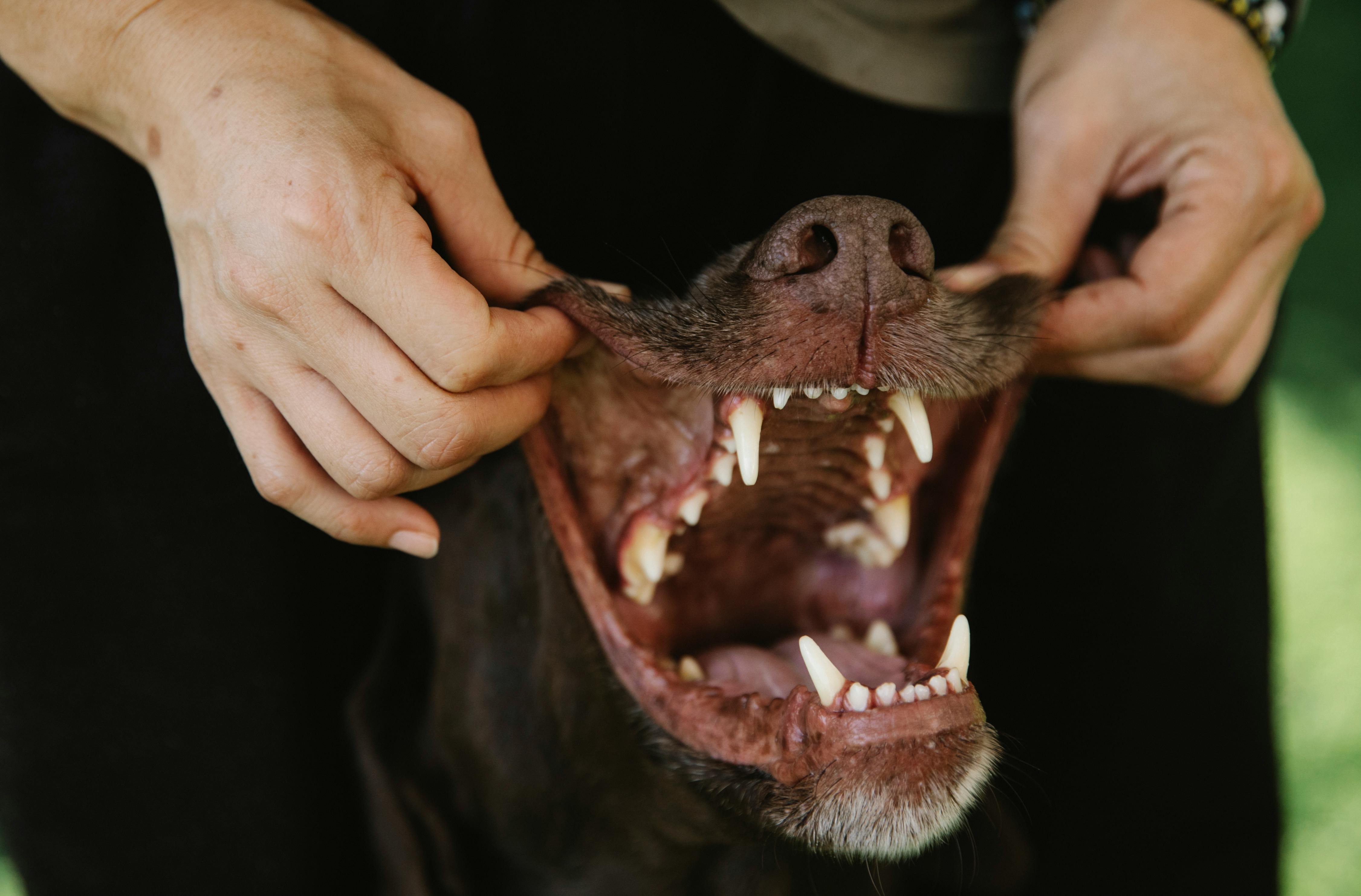Having white teeth is often seen as a sign of good health, beauty, and success. But are teeth actually meant to be white? In this article, we will explore why some people’s teeth are naturally whiter than others, the effects of lifestyle choices on tooth color, and the available treatments for whitening teeth.The natural color of teeth is a light off-white or ivory shade.
How Do We Whiten Our Teeth?
One of the best ways to whiten your teeth is to brush them regularly. Brushing with a fluoride toothpaste helps remove surface stains from your teeth, as well as providing protection against cavities and gum disease. You should brush your teeth twice a day for two minutes each time, using gentle circular motions. Flossing daily can also help remove plaque and other debris that can cause discoloration.
You may also wish to consider using an over-the-counter whitening product such as gels, strips, or toothpastes. These products are designed to help remove surface stains and may offer some mild whitening benefits. Before using any of these products, it is important to follow the instructions carefully and to check with your dentist if you have any concerns.
Professional whitening treatments are another option for those who want to achieve more dramatic results. These treatments use either hydrogen peroxide or carbamide peroxide gels that are applied directly to the teeth by a dentist or hygienist. The gel is then activated with light or laser energy which helps to break down the molecules in the gel so they can penetrate deeper into the enamel and dentin of the tooth. Most people will experience dramatic results after just one treatment, although multiple treatments may be necessary for maximum whitening effect.
Finally, another way to keep your teeth looking white is by avoiding certain foods and drinks that can cause staining. Coffee, tea, red wine, and dark-colored fruits and vegetables all have pigments that can contribute to discoloration of your teeth over time. If you do consume these items regularly, it is important to brush afterward in order to remove these particles from your teeth before they can do any staining damage.
Improved Aesthetics
Teeth whitening can improve the aesthetics of a person’s smile and boost their self-confidence. The process involves bleaching the enamel of the teeth to remove discoloration, resulting in a brighter, whiter appearance. Professional whitening treatments can be done in the dentist’s office or at home with kits purchased from a dental professional. Teeth whitening is an effective way to dramatically improve one’s smile, making it look more youthful and attractive.
Long Lasting Results
When done properly, teeth whitening can provide long-lasting results. Regular brushing and flossing habits can help maintain the bright white look achieved through whitening. Professional treatments are designed to last for up to two years, although exact results will vary depending on lifestyle factors like smoking and drinking coffee or tea. Touch up treatments can be done periodically to keep teeth looking their best.
Reduced Staining
In addition to improving aesthetics, teeth whitening can reduce staining from food and beverages like coffee or tea that would otherwise cause discoloration over time. Whitening products contain bleaching agents that break down stains on the enamel of the teeth, making them easier to remove with regular brushing and other dental hygiene practices.
Safe & Effective
Teeth whitening products are safe and effective when used properly according to instructions provided by a dental professional. Over-the-counter products should not be used more than directed as this could cause damage to the enamel of the teeth or other side effects. Professional treatments are closely monitored by a dentist or hygienist for maximum safety and effectiveness.
Are Teeth Whitening Products Safe?
Teeth whitening products are becoming increasingly popular as people strive to have brighter, whiter smiles. There are a wide range of products available, from over-the-counter gels and strips to professional treatments. But are these products safe?
The short answer is yes, teeth whitening products are generally safe when used as directed. However, some precautions should be taken when using them. It is important to read the instructions carefully and follow all directions provided. This includes avoiding contact between the product and your gums or other sensitive areas of your mouth.
Before using any whitening product, it is also important to consult with a dental professional to make sure it is safe for you to use. If you have any existing dental issues such as cavities or gum disease, you may need to avoid whitening treatments until they have been resolved. Some people may also be more sensitive than others when it comes to bleaching agents used in whitening products.
In general, teeth whitening products are safe when used correctly and with proper supervision from a dental professional. However, they should not be overused as this can cause damage to the enamel of your teeth and lead to sensitivity or other issues. When in doubt, it is always best to consult with your dentist before beginning any new teeth whitening regimen.
What Causes Yellowing of Teeth?
Yellowing of teeth is a common problem that affects many people. It can be caused by a variety of factors, including poor oral hygiene, aging, smoking, consuming certain foods and drinks, and taking certain medications. Poor oral hygiene is one of the most common causes of yellowing teeth, as plaque buildup on the surface of the teeth can lead to discoloration. As we age, our enamel becomes thinner and more porous, allowing stains from food and beverages to penetrate more easily. Smoking or using other forms of tobacco can also cause yellowing teeth due to the buildup of tar and nicotine in the enamel. Certain foods and drinks such as coffee, tea, red wine, berries, and citrus fruits have staining properties that can lead to yellow teeth. Finally, some medications such as antibiotics can cause discoloration in the teeth due to their high acidity levels.
In order to prevent yellowing teeth it is important to maintain good oral hygiene by brushing and flossing twice a day with fluoride toothpaste. It is also important to limit consumption of stain-causing foods and drinks such as coffee or tea. Regular dental checkups are also recommended in order to detect any underlying dental issues that may be causing discoloration.

Preventing Yellowing of Teeth
Maintaining good oral hygiene is the key to preventing yellowing of teeth. Brushing your teeth at least twice a day and flossing can help remove plaque and build-up that can lead to discoloration. Regular cleaning by a dentist will also help keep your teeth healthy and white. Additionally, there are a few lifestyle changes that can reduce the risk of yellow teeth.
Limiting the amount of sugary and acidic foods you consume can help to prevent tooth enamel erosion, which can lead to yellowing. Reducing or eliminating coffee, tea, and other dark-colored drinks will also help keep your teeth from becoming discolored. Tobacco products, including cigarettes and smokeless tobacco, should be avoided as they will stain your teeth yellow over time.
It is also important to stay hydrated throughout the day by drinking plenty of water, as it helps wash away any food particles that could cause staining or discoloration on the teeth. Regularly using an effective whitening toothpaste containing baking soda and peroxide has also been known to reduce staining on the surface of the teeth. Finally, if all else fails, professional whitening treatments are available from your dentist for those who wish to have their smile restored back to its original brightness.
By following these simple steps, you can keep your smile looking bright and beautiful for years to come!
Is It Safe To Use DIY Recipes To Whiten Teeth?
DIY recipes for whitening teeth are becoming increasingly popular due to their affordability and convenience. However, it is important to be aware that these recipes do not always provide the same results as professional whitening treatments. DIY recipes may be safe for some people, but they can also cause damage to enamel and gums if not used correctly.
It is important to research any DIY recipe before using it on your teeth, as some recipes may contain ingredients that can cause irritation or damage to the enamel. In addition, some DIY recipes require the use of harsh chemicals which can be dangerous if not used in the correct amounts or applied correctly.
In general, it is best to speak with a dental professional before attempting any DIY teeth whitening recipe. A dentist can provide advice on which ingredients are safe and effective and can help you determine if a particular recipe is appropriate for your individual needs. They will also be able to monitor any changes in your teeth or gums caused by the use of a DIY whitening recipe and make sure that there are no adverse effects from its use.
Overall, while DIY recipes may be an affordable and convenient way to whiten your teeth, it is important to understand the risks associated with them before attempting them at home. It is always best to speak with a dental professional before trying any new whitening product or recipe in order to ensure that it is safe and effective for your individual needs.
Professional Treatments vs DIY Solutions For Whitening Teeth
When it comes to whitening teeth, it can be beneficial to explore both professional treatments and do-it-yourself (DIY) solutions. Professional treatments can provide quicker and longer lasting results, but DIY solutions can be a more cost-effective option. Here is a comparison of professional treatments vs DIY solutions for whitening teeth.
Professional treatments for whitening teeth typically use a higher concentration of hydrogen peroxide or carbamide peroxide, which are both bleaching agents. These ingredients are typically combined with other substances that help to activate the bleaching agent for optimal results. Professional treatments can include in-office whitening sessions, take-home trays with gel, or strips that are applied directly to the teeth for a period of time. Professional treatments tend to have more immediate and long lasting results than DIY solutions.
DIY solutions for whitening teeth tend to have a lower concentration of bleaching agents than professional treatments. Common ingredients used in DIY solutions include baking soda, hydrogen peroxide, lemon juice or activated charcoal. These ingredients are usually mixed together and applied directly to the teeth for a short period of time. While DIY solutions may produce some degree of whitening, they are not likely to be as effective as professional treatments and the results may not last as long either.
In conclusion, while both professional treatments and DIY solutions offer an option for whitening teeth, professional treatments tend to have quicker and longer lasting results than DIY solutions. However, if you are looking for an affordable way to brighten your smile then DIY solutions may be worth considering.

Conclusion
Our teeth are designed to be white and healthy, but this does not mean that they should always be perfectly white. While some stains and discoloration can occur due to lifestyle choices, poor oral hygiene, or genetics, it is important to remember that these do not necessarily signal a need for professional dental intervention. Instead, many of these problems can be solved with simple lifestyle changes such as brushing twice daily, flossing regularly, and visiting a dentist for regular check-ups. In addition to these preventive measures, individuals can also choose to use over-the-counter whitening products or get in-office whitening treatments from their dentist if they want a brighter smile.
Thus, while teeth are generally meant to be white, there is no one-size-fits-all answer as to how white. Ultimately, it is up to each individual to decide what type of look they want for their teeth and take steps towards achieving that goal.
